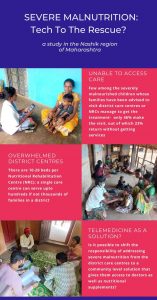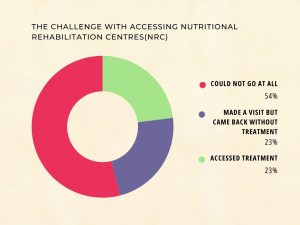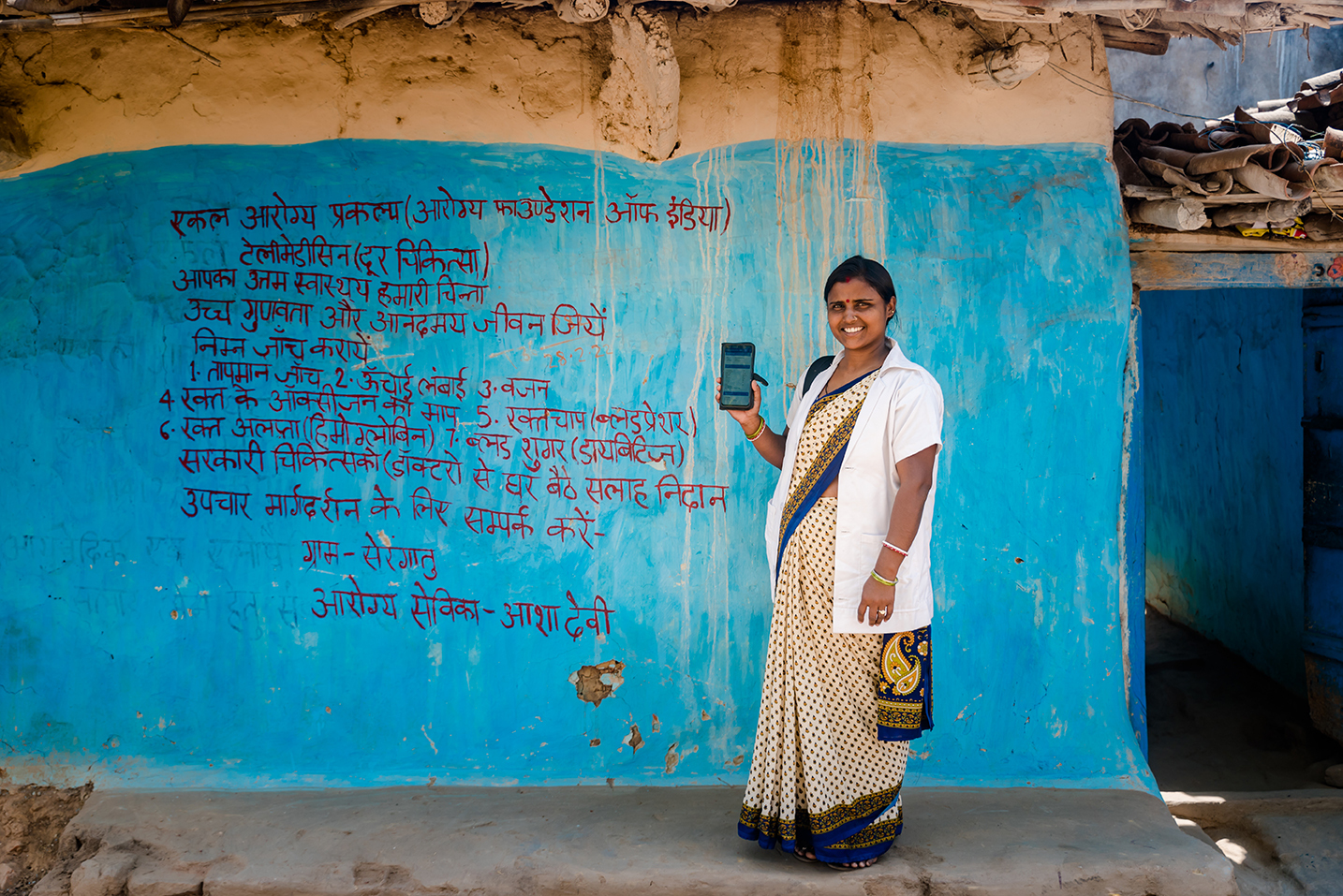 Intelehealth’s study in Nashik District aims to tackle Severe Acute Malnutrition (SAM) through an innovative app-based plan.
Intelehealth’s study in Nashik District aims to tackle Severe Acute Malnutrition (SAM) through an innovative app-based plan.
For children under five who suffer from Severe Acute Malnutrition(SAM), the mortality rate goes up by 5-8 times compared to well-nourished children. Yet, parents of 54% of such children who had been referred to a hospital or Nutritional Rehabilitation Centre (NRC) in India were unable to follow through with the referrals. In the absence of specialised care within the community, the role of such care centres and government hospitals remains essential in improving the health of these children. These are the first set of resources for low-income families in both rural and urban areas.
Nashik, a district in the western state of Maharashtra, has one of the highest numbers of severely malnourished children. Right since its inception, Intelehealth has been working in the region with communities that have little or no access to healthcare. The challenge of creating a community-based solution in these forested, hilly terrains spoke directly to its mission and so was born a research study to examine the role of telemedicine in improving outcomes for children with Severe Acute Malnutrition(SAM).
For families living in remote regions, accessing NRCs is an ordeal. Usually, such centres are attached to district hospitals and have 10-20 beds. Each such centre is meant to serve hundreds if not thousands of care-seeking families. Vast swathes of land can fall under a district and families that are willing to travel have to often spend considerable amounts of time and money to get here. Occupied beds at the centre translates to additional wait times. That aside, parents have also to consider how to attend to the needs of their other children back home. Who will cook for them? Will the relatives be able to take good care of them? If one is a daily-wage worker, travelling these distances can also mean a loss of income – income that directly impacts their daily meals. It is not surprising then that even among the 46% who sign up for the treatment provided at such centres, 23% return without getting any service. That means a staggering 78% of children with severe malnutrition are not getting the care they need.
The telemedicine-based SAM pilot intervention and research study by Intelehealth is being carried out in 30 remote villages in the region. The first step is to link the community with a health worker, also known as Sakhi or friend, who is suitably trained and supported by a medical supervisor and usually resides in the community. They assess and understand nutritional requirements of these children and put the families in touch with doctors and nutrition experts via teleconsultations. If the doctor recommends supplementary food or medicines, these can be easily availed directly or through government provisions. Similarly, linkages to local medicine supplies and diagnostic labs can also be arranged.

The clinical protocol of the application plays a vital role in managing the health of these children and assessing their comorbidities. With consistent telemedicine services and linkages to the government centres, one can easily address emergencies over time. The app makes it possible to geographically locate the cases with higher precision, manage more SAM cases at the community level and refer only the most severe ones to the nearest NRC.
Further, a control group is essential to understand the efficacy of such a programme. To accurately assess the effectiveness of such a Community-based Management of Acute Malnutrition Intervention (CMAM), part of the study focuses especially on children in two blocks in Nashik. One group will receive tech-enabled nutritional intervention and the control group will continue to receive standard medical care (referral to an NRC). We will follow both groups to assess if the CMAM intervention is as clinically effective as in-person care at an NRC while being more accessible, affordable for patients, as well as more cost effective for the health system.
According to UNICEF, South Asia is home to roughly half of the world’s severely malnourished children. With a telemedicine-based care mechanism that is rooted in the community, one can shift the current burden away from the NRCs and district hospitals and truly bring the solution home.


